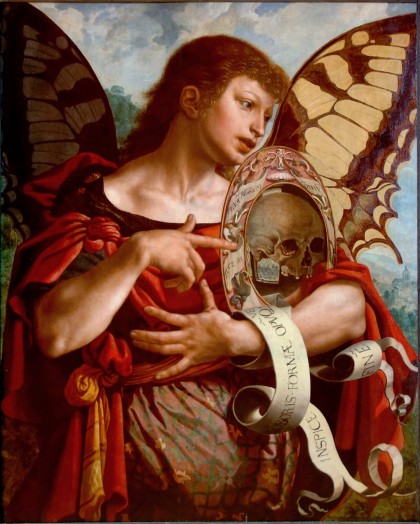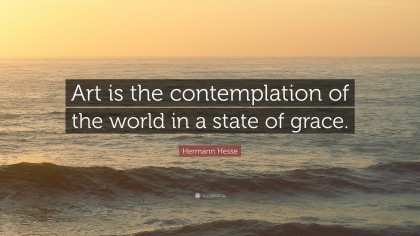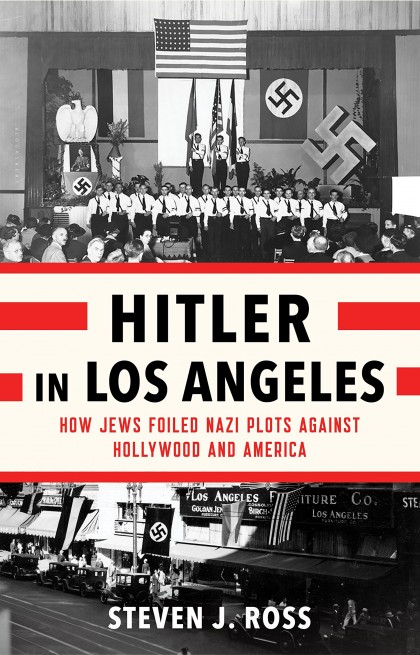Fall Harvest Moon
 Three nights in a row at Beth Evergreen. Challenging for this early to bed, early to rise guy. Though. Kabbalah fascinated me. I’m beginning to feel my way into the occult, again. The hidden wonders. This time around I may be able to actually hold at arm’s length the cultural vehicles and not resist the message because of the messengers. That is, kabbalah, in particular, has a poetic, evocative, confounding approach that speaks to my sense of absurdity. And, my in but not of relationship to Judaism also allows me a critical distance that I find very helpful.
Three nights in a row at Beth Evergreen. Challenging for this early to bed, early to rise guy. Though. Kabbalah fascinated me. I’m beginning to feel my way into the occult, again. The hidden wonders. This time around I may be able to actually hold at arm’s length the cultural vehicles and not resist the message because of the messengers. That is, kabbalah, in particular, has a poetic, evocative, confounding approach that speaks to my sense of absurdity. And, my in but not of relationship to Judaism also allows me a critical distance that I find very helpful.
At the mussar vaad practice group last night we had a discussion about the character trait kavod: honor, respect, dignity. It focuses on realizing the worth of each individual, of self and other, the god-in-me bows to the god-in-you.
There is a distinctively Jewish way of taking up this idea. For instance, a story in the Talmud has rabbi’s discussing whether a man on his way to hear the megillah, scripture written on a scroll (megile) but not part of the Torah, the story of Esther read at Purim being the usual example, must stop to bury a corpse he finds on the road. Yes, the rabbi’s conclude, he must bury the body rather than go hear the reading of the miracle of Esther. Why? Because of the honor due to any person, even their corpse. That transmits the message about kavod in way that’s hard to ignore. Teaching stories are a significant part of Jewish civilization.
 This story works for me. The imagery is something I can relate to because I’m human. Honor is so important and so often gotten wrong. Think, for example, about the instance of DJT honoring America First; just as Kim Jong Un honors himself and North Korea first. Or the gang member who feels dissed, disrespected, dishonored. A sense of kavod would have prevented the shooting in Las Vegas, the holocaust. It would prevent child abuse and domestic violence. Harming another whose dignity and respect is as worthy as your own is just not possible.
This story works for me. The imagery is something I can relate to because I’m human. Honor is so important and so often gotten wrong. Think, for example, about the instance of DJT honoring America First; just as Kim Jong Un honors himself and North Korea first. Or the gang member who feels dissed, disrespected, dishonored. A sense of kavod would have prevented the shooting in Las Vegas, the holocaust. It would prevent child abuse and domestic violence. Harming another whose dignity and respect is as worthy as your own is just not possible.
How we honor ourselves and, in turn, honor others is, therefore, a critical issue for our daily lives, our communal lives, our global lives. The kabbalistic conversation about Paradise hidden behind the wilderness of language allowed me, in a way I can’t explain, to peel away words and constructs and feel my way into the place where all pulses and throbs and lives and knows neither time nor space. The words for god, gods, goddesses point to this place, but like Hotei pointing at the moon, they are just fingers, not the moon itself.
Long ago, during the height of the sixties, many of my friends and compatriots were turning to Buddhism, to Hinduism, think Hare Krishnas and Zen. You might think, with my Asian bent, that they appealed to me immediately. No. I wanted, I said to myself, to go where they were going, but with Western cues, ones that were already woven into the fabric of my cultural inheritance. I was studying anthropology at the time and keenly aware of the way culture subtlety shapes our reality-the wilderness of language being no small part of it.

That’s how I ended up in Seminary. Eventually. And there were moments during sem, moments later during my time in the Christian ministry, when certain Christian traditions pulled me in in a manner similar to kabbalah: the Jesus prayer, lectio divina, contemplative prayer, retreats. The mystical side. As kabbalah is an important mystical tradition in Judaism. I got sidetracked, and yes I believe it was a side track, though, by my political commitments, by my nurture the institution commitments, by my always soft, but extant, commitment to the textual underpinnings of Christianity.
The quasi-Scholastic nature of the religions of the book, and most religions are, in one way or another, religions of the book: buddhist sutras, the tao te ching, the vedas, the koran, the bible, the tanakh, however, pushed me away, as it did Emerson. I want a religion, like him, of a revelation to us, not the dry bones of theirs. So I chose to read the book of nature, to step outside the textual traditions and the wilderness of their dogma, their stories. I’m still out there.
But. With the help of Beth Evergreen and the spirit of reconstructionist thought I’m once again able to be fed by those same texts without immersing myself in their interpretive world, at least not in a, I’d better get this or I’m lost (in the sense of geographically lost, not the metaphysical idea of salvation) sense. This is freeing for me, and Beth Evergreen has made it possible. I can take those cues from our Judaeo-Christian cultural inheritance and hear their powerful messages without becoming entangled in them, enmeshed.
As Leonard Cohen might say, Hallelujah.

 Behind the wilderness. Everett Fox is a Jewish scholar who did a translation of the Torah into English while preserving the Hebrew syntax. He made some startling word choices, too, such as in this verse: Exodus 3:2 “He (Moshe) led the flock behind the wilderness–and he came to the mountain of God, to Horev.” Behind is such an interesting choice.
Behind the wilderness. Everett Fox is a Jewish scholar who did a translation of the Torah into English while preserving the Hebrew syntax. He made some startling word choices, too, such as in this verse: Exodus 3:2 “He (Moshe) led the flock behind the wilderness–and he came to the mountain of God, to Horev.” Behind is such an interesting choice. Behind the wilderness is the God who is, as Fox translates later in this passage: I-will-be-there howsoever I-will-be-there. It is this God whose messenger Moshe saw in the bush that burned without being consumed. This God’s name, a verbal noun composed of a mashup of past-present-future tenses for the verb to be, does not reveal. It conceals. It means, it does not describe. The messenger in the bush speaks for the vast whorling reality in which past, present and future are one, all experienced in the present and as part of which we are each integral, necessary and non-interchangeable.
Behind the wilderness is the God who is, as Fox translates later in this passage: I-will-be-there howsoever I-will-be-there. It is this God whose messenger Moshe saw in the bush that burned without being consumed. This God’s name, a verbal noun composed of a mashup of past-present-future tenses for the verb to be, does not reveal. It conceals. It means, it does not describe. The messenger in the bush speaks for the vast whorling reality in which past, present and future are one, all experienced in the present and as part of which we are each integral, necessary and non-interchangeable.




 Sites of Los Angeles
Sites of Los Angeles
 “That’s us,” he said, sweeping his hand around the room. Of course, it’s not me, but I took the point. Israel, those Jews in the sanctuary at Beth Evergreen and in Rosh Hashanah services around the world last night, and those Jews not in the services, too, is a community which celebrates its most important memories every Sabbath with a parsha reading, a segment of the Torah.
“That’s us,” he said, sweeping his hand around the room. Of course, it’s not me, but I took the point. Israel, those Jews in the sanctuary at Beth Evergreen and in Rosh Hashanah services around the world last night, and those Jews not in the services, too, is a community which celebrates its most important memories every Sabbath with a parsha reading, a segment of the Torah. This is reconstructionist Judaism, an explicitly non-supernatural religion that nonetheless adheres to the traditions and customs of Jewish civilization, including Torah study, sabbath observance, comforting mourners, repairing the world and doing acts of loving kindness.
This is reconstructionist Judaism, an explicitly non-supernatural religion that nonetheless adheres to the traditions and customs of Jewish civilization, including Torah study, sabbath observance, comforting mourners, repairing the world and doing acts of loving kindness. The last night of the Eclipse Moon, a disastrous month for North America from the eclipse to its waning moment. The wildfires are still burning in the West from the state of Washington to California, in Oregon and Montana and Idaho. Harvey and Irma related disaster cleanup has only begun. The same in southern Mexico for the victims of the 8.1 earthquake. Jose is still pounding around in the Atlantic and Maria, now a category 5, has just shattered Dominica, Guadeloupe, and is headed for Martinique and Puerto Rico. It’s not the apocalypse, no, but for those whose homes and forests are on fire, under water, battered by wind or destroyed by the movement of the earth, it may as well be.
The last night of the Eclipse Moon, a disastrous month for North America from the eclipse to its waning moment. The wildfires are still burning in the West from the state of Washington to California, in Oregon and Montana and Idaho. Harvey and Irma related disaster cleanup has only begun. The same in southern Mexico for the victims of the 8.1 earthquake. Jose is still pounding around in the Atlantic and Maria, now a category 5, has just shattered Dominica, Guadeloupe, and is headed for Martinique and Puerto Rico. It’s not the apocalypse, no, but for those whose homes and forests are on fire, under water, battered by wind or destroyed by the movement of the earth, it may as well be.
 Yesterday I traced the funk back to an e-mail I sent out late Saturday night thanking all the main participants in the Evergreen Forum. Two folks responded quickly, thanking me, too, and I realized, as I searched for the source of the mood, that I wanted more of those and when they didn’t come, I wondered why not? It was that wondering that created the bad mood. In others words I had poisoned my own well, then drunk from it. Well, I realized, that’s silly. Take the compliments, move on. So, I did.
Yesterday I traced the funk back to an e-mail I sent out late Saturday night thanking all the main participants in the Evergreen Forum. Two folks responded quickly, thanking me, too, and I realized, as I searched for the source of the mood, that I wanted more of those and when they didn’t come, I wondered why not? It was that wondering that created the bad mood. In others words I had poisoned my own well, then drunk from it. Well, I realized, that’s silly. Take the compliments, move on. So, I did.

 Kate was nervous about her food, but it was received well, its disappearance a testimony to its yumminess. Especially the jack fruit. Kate found it at King Sooper this week. She bought a 20 pound one, then she and Ruth performed a fruitectomy on it to retrieve the sweet yellow flesh. This southeast Asian fruit is unfamiliar to most North Americans, but I had it for the first time when preparing to board a water taxi on the Chao Phraya in Bangkok. If you haven’t had it, really good.
Kate was nervous about her food, but it was received well, its disappearance a testimony to its yumminess. Especially the jack fruit. Kate found it at King Sooper this week. She bought a 20 pound one, then she and Ruth performed a fruitectomy on it to retrieve the sweet yellow flesh. This southeast Asian fruit is unfamiliar to most North Americans, but I had it for the first time when preparing to board a water taxi on the Chao Phraya in Bangkok. If you haven’t had it, really good.